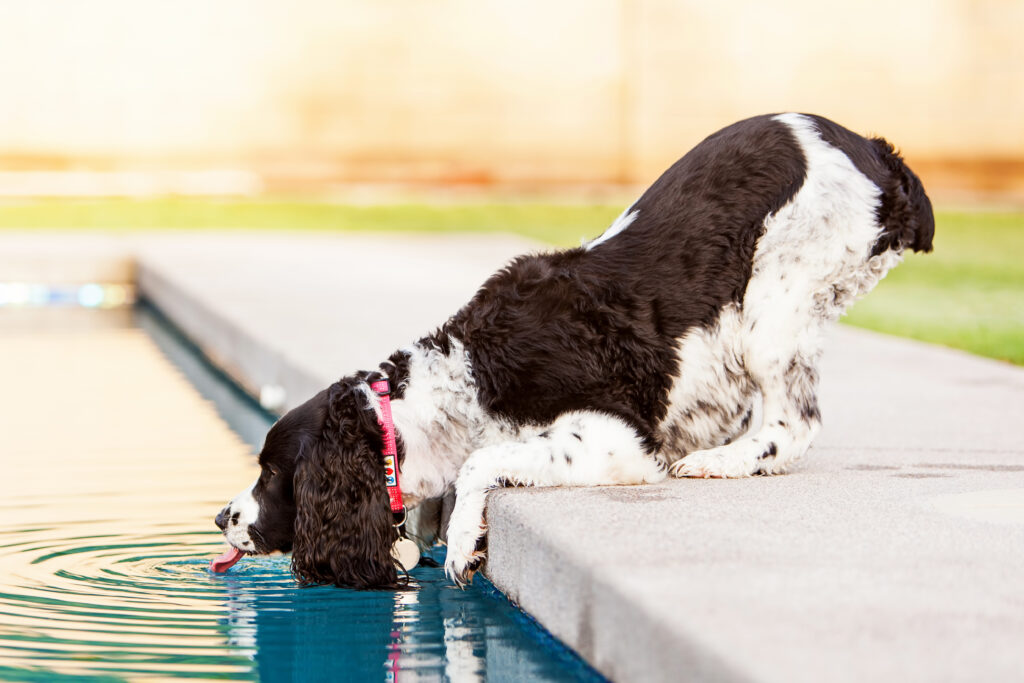What are the Signs of a Dog Overheating?
Dog overheating is a serious concern for pet owners, especially during hot weather. It’s crucial to understand the signs of overheating in dogs and how to prevent it. This guide will help you identify the symptoms of dog overheating, outline measures to avoid overheating, and offer advice on keeping your dog safe and comfortable during hot weather.

Why Dogs Overheat
Dogs, unlike humans, do not have the ability to sweat efficiently. Their primary means of cooling down is through panting, which helps to evaporate moisture from their airways. This process is less effective than sweating and can be insufficient in extreme heat or humidity. As a result, dogs are at risk of overheating, which can lead to serious health problems and even death.
Panting: A Dog’s Cooling Mechanism
Panting is a dog’s primary method of evaporative cooling. When a dog pants, they inhale cooler, drier air through their nose and upper airways. This air then exchanges with warm, moist air in the lungs, providing a cooling effect. Panting also serves to expel excess body heat as the dog exhales hot, moist air through the mouth over their tongue.
To maintain their body temperature, dogs need access to cool water on hot days, as this helps to keep their airways moist and facilitates the evaporative cooling process. However, in humid environments, dogs may struggle to cool down effectively through panting alone, putting them at greater risk of overheating.
Signs of Dog Overheating
It is essential to recognize the warning signs of dog overheating to prevent serious health issues. Some common symptoms include:
- Excessive panting
- Excessive drooling
- Bright red gums and tongue
- Labored breathing
- Weakness or disorientation
- Vomiting or diarrhea
- Seizures
- Unconsciousness
In the event that you observe any of these indications, it is vital to act quickly to lower your dog’s body temperature and seek medical attention from a veterinarian.
Overheating Risks for Flat-Faced Dogs
Certain breeds, particularly those with short, pushed-in muzzles, such as Pugs and French Bulldogs, are more susceptible to overheating. These brachycephalic dogs have less efficient airways, making it harder for them to move air in and out of their lungs and cool themselves down.
Dogs with chronic respiratory issues, such as those caused by irritation or swelling in the throat, may also struggle to breathe and cool down effectively, putting them at greater risk of overheating.
Preventing Dog Overheating: Practical Tips
There are several steps pet owners can take to prevent their dogs from overheating:
- Provide fresh water and shade: Ensure your dog has access to cool water and a shady spot to rest on hot days.
- Use cooling products: Dog cooling products, such as cooling mats, vests, and bandanas, can help keep your dog comfortable in hot weather.
- Practice dog car safety: Never leave your dog in a parked car, even with windows cracked open. Temperatures can rise rapidly, putting your dog at risk of overheating.
- Avoid hot, humid days: Limit your dog’s outdoor activity on particularly hot or humid days, and avoid exercising them during the hottest parts of the day.
- Keep your home cool: Ensure your home is adequately cooled on hot days, and consider installing a temperature alarm that notifies you if the temperature rises too high.
- Monitor elderly or ill dogs: Be extra vigilant with older dogs, those with chronic illnesses, or pets with respiratory issues, as they may be more susceptible to overheating.
- Be cautious with hair dryers and cage dryers: Overheating can occur during grooming, so be mindful of your dog’s comfort when using hair dryers or cage dryers.
- Understand breed-specific risks: Consult your veterinarian and breed club for information on heat sensitivity and potential risks specific to your dog’s breed.
Road Trip Tips for Dog Owners When Hot Outside
Taking your dog on a road trip can be a fun experience for both of you, but it’s essential to keep your dog’s comfort and safety in mind when it is hot outside. Here are some tips for a successful road trip with your dog:
- Use a dog harness or dog car seat: Ensure your dog is securely restrained in the vehicle using a safety harness, dog car seat, or dog seat belt. This will keep them safe in the event of an accident and prevent them from distracting the driver.
- Provide access to cool water: Make sure your dog has access to fresh, cool water throughout the journey.
- Take regular breaks: Stop frequently to allow your dog to stretch their legs, use the bathroom, and cool off if needed.
- Keep the car cool: Maintain a comfortable temperature in the car by using air conditioning or opening windows.
- Monitor your dog for signs of overheating: Keep an eye on your dog for any signs of excessive panting or discomfort, and take action to cool them down if needed.
- Use a cargo area or booster seat for small dogs: Small dogs can benefit from a designated space in the cargo area or a booster seat to keep them comfortable and secure during the journey.
By following these tips, you can help ensure your dog’s safety and comfort during road trips and prevent dog overheating.
In Conclusion
Dog overheating is a serious risk for all dogs, especially during hot weather. By recognizing the signs of overheating, taking preventive measures, and following road trip safety tips, you can help keep your dog safe and comfortable in hot conditions. Be vigilant and proactive in caring for your dog, and enjoy a happy, healthy summer together.

